Air Conditioner Upgrade Energy Savings Calculator
2 minute readHow much can you save with a more energy efficient air conditioner?
Home > BKV Energy Blog > All Posts > How to Reduce Your Texas Electric Bill in All Seasons
100 tips to reduce your electric bill and save money by conserving energy.
12 minute read • Last update October 2025
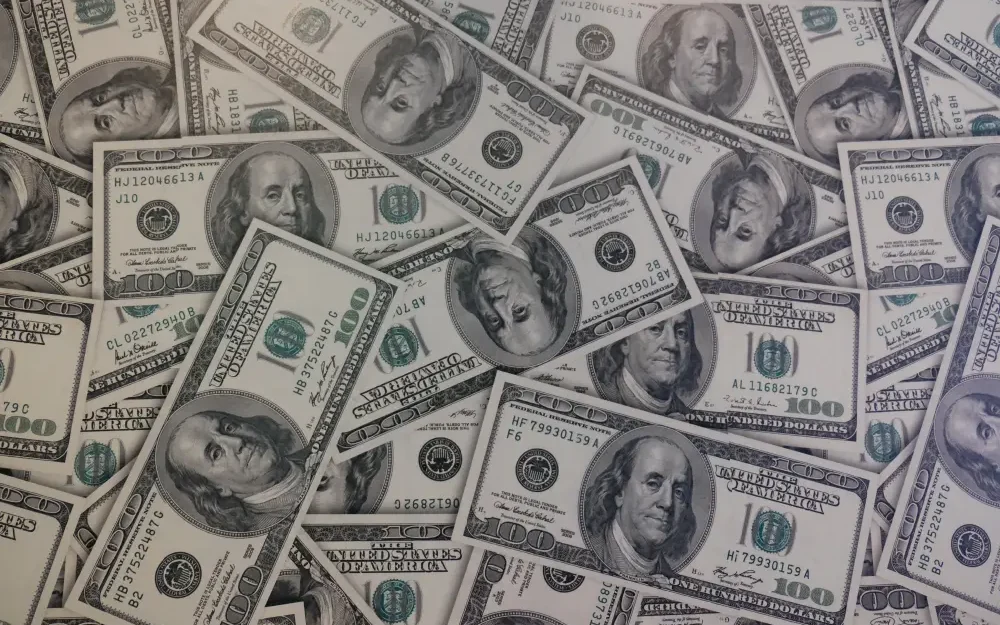
BKV Energy’s ultimate guide to saving money on your electric bill. We discuss ways to save energy around the house, including reducing heat transfer, using appliances efficiently, and improving insulation. We also provide lifestyle tips on how to save on your electric bill costs throughout the year.
Learn how to calculate your electricity bill.
This helps prevent heat from entering your house through the windows, reducing overall energy consumption. This is especially important for south and west-facing windows that receive the most sun during the warmest hours of the day.
Turn up the thermostat to 78-80 degrees during the day. The closer your indoor temperature is to the outdoors, the less energy your central air conditioner will use, significantly lowering your energy costs over time.
Set the thermostat above 80 degrees if your home will be empty for 4 or more hours. It requires more energy to keep your home cool while you’re out (and no one is there to enjoy the AC) than to cool it again when you return. This simple adjustment is one of the easiest tips for how to lower electric bills while keeping your home comfortable when you’re there.
Using ceiling fans to keep air flowing reduces air conditioning use and keeps electricity costs down. Remember to turn them off when you leave the room, as fans cool people, not rooms.
Don’t have ceiling fans in your home? Consider investing in portable or tabletop fans to keep you cool. This allows you to set the thermostat higher and use less energy on air conditioning.
Covering your pans while cooking on the stove will release less heat into the air. This prevents your air conditioner from working harder to maintain the temperature in your home.
Plan heat and humidity-generating activities such as cooking, laundry, and dishwashing for early morning or late evening.
If you’re figuring out how to reduce the current bill, don’t set your thermostat to extremely low temperatures. This wastes energy. Instead, lower it steadily for more efficient cooling.

Ensure your fireplace flue is closed when not in use to prevent cold drafts from entering your house. This small adjustment can help lower electric bills by keeping your home insulated from outdoor cold air.
Keep curtains or blinds open on sunny days to warm your home naturally with direct sunlight. This free, natural heat can help lower your electric bill over time.
Instead of relying on the furnace alone, dress warmly or use blankets to reduce strain on your heating system and lower costs.
During those cloudy winter days, close the curtains and blinds to help contain warm air inside. This method can reduce your electric bills and minimize heat loss.
Entertaining a large gathering at your home? Drop the thermostat a few degrees. Body heat will naturally raise the temperature when guests arrive.
Keep your thermostat at regular settings when leaving the house for 4 or more hours. It requires more energy to reheat your home than to maintain a steady temperature.
Steer clear of portable heaters as they consume a lot of energy to warm a small space, significantly increasing your bill.
Minimize use of the bathroom exhaust fan during the winter. The water vapor from showers helps humidify your home, contributing to overall warmth.

Try to avoid opening the refrigerator door more than you need to – plan your trips to the fridge! This will help you conserve energy and is a great example of how to reduce electric bill costs in the kitchen.
Clean dust from the coils on the bottom or the back of your refrigerator to enhance cooling efficiency. This easy chore keeps your refrigerator in top condition, helping you save electricity.
Allow hot foods or drinks to cool before placing them in the refrigerator. Putting hot items directly into the fridge forces it to work harder to maintain its temperature, increasing energy consumption.
Check the seals on your refrigerator doors and replace them if they are broken or ripped. Proper seals prevent cold air from escaping, ensuring your fridge runs efficiently.
Set the refrigerator between 38-40 degrees Fahrenheit. This temperature range keeps food fresh while minimizing power usage.
Set the freezer around 5 degrees Fahrenheit. This temperature is cold enough to safely keep food frozen while preventing unnecessary energy use from overly cold settings.
Clean out the refrigerator to reduce clutter and increase interior circulation.
Only run the dishwasher when the machine is full, but avoid overloading. This maximizes electricity usage and helps minimize your electric bill over time.
Air dry your dishes instead of using the heat dry setting on the dishwasher. This simple change can play a considerable role in how to save money on electric bills. Air drying also helps prevent water spots and can extend the life of delicate glassware.
If available, set the dishwasher to ECO mode before running a cycle. This mode typically uses less water and lower temperatures, reducing both water and electricity usage.
Try not to open the oven door to check on cooking progress, as this releases heat, forcing the appliance to use more energy to maintain temperature. Instead, utilize the oven light, making sure to turn the light off when you’re finished with your check-in.
Avoid using the broiler in the oven too often. This cooking setting consumes much more energy than regular baking or roasting due to its high heat intensity.
When you can, cook your food in the microwave. Microwave ovens consume less energy than regular ovens and often cook food more quickly, saving both energy and time.
When cooking on an electric stove, try turning off the burners before you are finished cooking. The pans will retain heat with the burners off and continue to cook your food, making use of the residual heat.
Don’t forget to turn off the kitchen exhaust fan after unwanted odors have dissipated. Leaving it on unnecessarily can draw out conditioned air, making your heating or cooling system work harder.
Clean your garbage disposal regularly so it requires less energy to operate when you turn it on.
Upgrade to a refrigerator and a dishwasher that are Energy Star-rated. These appliances are designed to use significantly less energy than standard models, often paying for themselves over time.
Lowering the temperature settings on your water heater will reduce energy use, as it won’t need to work as hard to maintain high temperatures.
Shower with colder water so your water heater consumes less energy.
Take shorter showers. Spending less time in the shower reduces your utility bills by conserving both water and the energy needed to heat it.
Turn off the tap while scrubbing soap on your hands and brushing your teeth. This habit can save gallons of heated water daily.
Repair leaking faucets and pipes to reduce warm water leaks which increase water heater energy usage.
Turn off the exhaust fan in your bathroom after unwanted water vapors have been removed. During the winter, use the exhaust fan sparingly, if at all, as excessive use can remove warm air from your home.
Upgrade to a tankless water heater as part of your strategy on how to save money on electric bills. These units heat water on demand, making them 35-45% more energy efficient and eliminating the energy waste from traditional water tanks.
Plug your electronics into power strips and turn the power strip off when the electronics are not in use. Electronics plugged directly into the wall are always drawing power, even when turned off.
Turn down the brightness settings on your televisions to reduce the energy used while you watch TV.
Turn down the brightness on your desktop computer. This is not only better for your eyes and sleeping habits but can significantly reduce your computer’s energy consumption.
Watching the same television show as a housemate or family member? Schedule time to watch together instead of separately to reduce the amount of time the TV is on.
Relaxing at home? Pull out a book to read instead of switching on the TV.
Unlike desktop computers, laptops don’t need to be plugged in 100% of the time and are generally more energy-efficient.
Buy portable solar battery charging packs to charge your phones, laptops, and tablets. You will never need to use your home’s energy to power your devices again! This eco-friendly option harnesses renewable energy, making it an effective option for how to minimize electricity bills.
Unplug your devices once they are finished charging. Leaving them plugged in after they’re fully charged wastes energy and can potentially shorten the battery life of your devices.
Turn off and unplug all lights and electronics when you leave for vacation. This eliminates unnecessary energy use while you’re away.
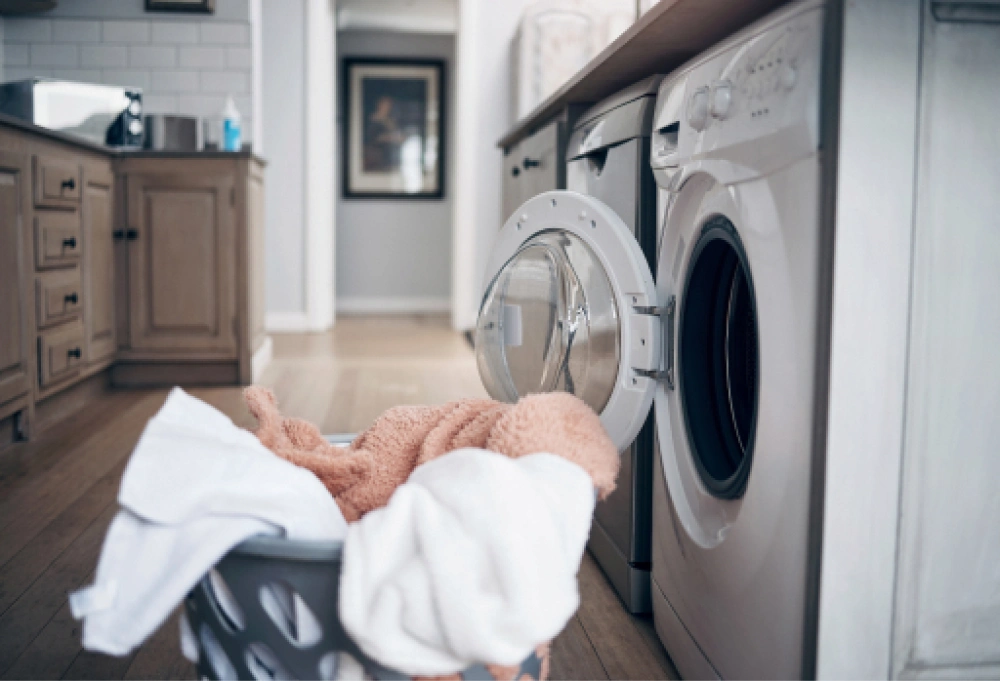
Check your laundry before the cycle ends; clothes are often dry earlier than the preset time. Consider upgrading to a dryer with a moisture sensor for automatic, energy-efficient drying.
Clean the dryer’s lint filter before each use. This habit improves efficiency, reduces drying time, and prevents potential fire hazards.
Wash your laundry with cold water to significantly reduce your water heater’s workload, as heating water for laundry is one of its most energy-intensive tasks.
When possible, hang clothes to dry in the sun to eliminate the substantial energy costs associated with running an electric dryer.
Run full loads in your washer and dryer, but avoid overloading. This approach maximizes efficiency per cycle without straining the machines.
Invest in Energy Star-rated washer and dryer sets. These appliances are designed for significant long-term savings on both energy and water use.
Switch from regular on/off light switches to dimmer switches so you can control the brightness of your bulbs. Lower intensity brightness consumes less electricity.
Replace chandeliers with lighting fixtures that have fewer bulbs. Fewer bulbs = fewer watts used.
Turn the lights off when you leave the room to reduce wasted energy.
Regularly dust light bulbs. Clean bulbs provide more light, allowing you to use lower wattage settings.
Replace incandescent bulbs with LED light bulbs. These use up to 75% less energy, significantly cutting your lighting costs over time.
Install solar-powered exterior lights. These harness free solar energy, illuminating your outdoor spaces without adding to your electric bill.
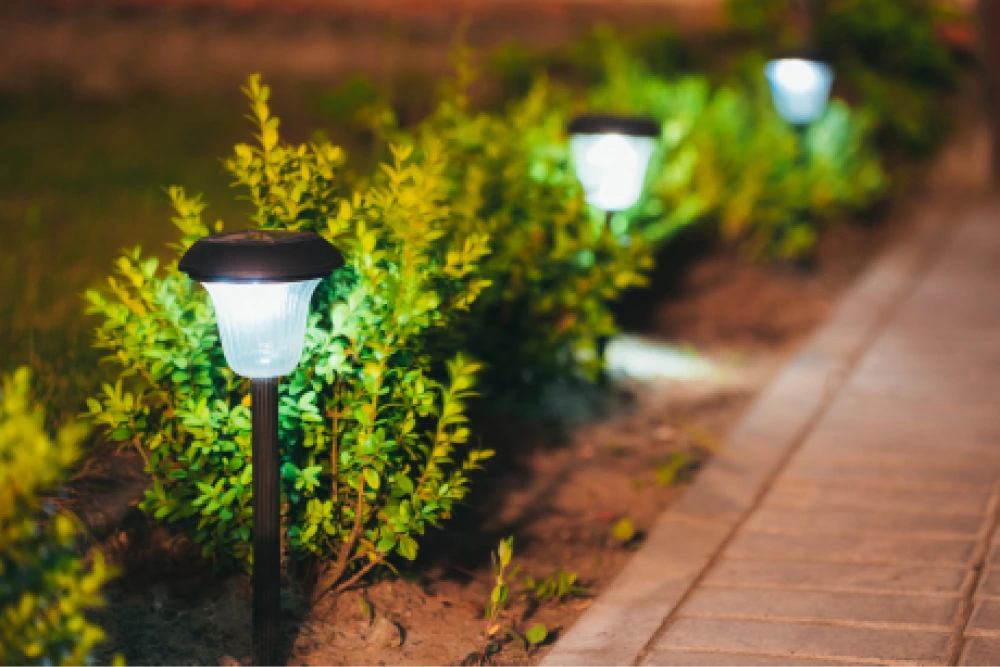
Check that your light bulbs do not exceed the recommended wattage of each socket.
Take advantage of natural light whenever possible, especially during the spring and fall when temperatures outdoors are milder.
Use LED lighting for holiday decorations. These consume less power than traditional bulbs, keeping your festive display from inflating your bill.
Install a timer for holiday lights. This ensures lights are only on when needed.
Make sure your air vents are not blocked by furniture. This allows your HVAC system to distribute air evenly, reducing its workload.
Replace or clean dirty air filters every 30-90 days. Clean filters prevent your HVAC system from straining to push air through clogged filters.
Have your heating and cooling system professionally inspected each spring and fall. Regular check-ups catch issues early, preventing inefficient operation that drives up costs.
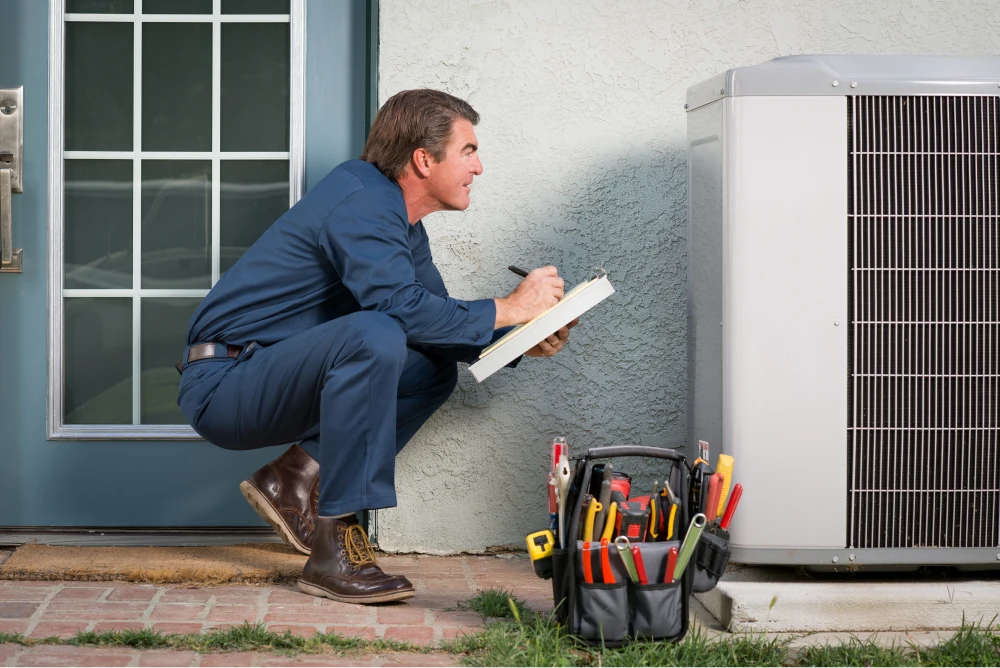
Provide shade for outdoor HVAC units. Cooler units don’t have to work as hard in hot weather, using less energy.
Switch to a smart programmable thermostat. These devices automate temperature adjustments, optimizing your HVAC use throughout the day.
Open the windows in mild weather and turn off the HVAC. This gives your system a break during comfortable periods, cutting energy use entirely.
Have your air ducts professionally cleaned. Clean ducts allow air to flow more freely, reducing the strain on your HVAC system.
Keep exterior doors and windows closed when the HVAC system is on. This prevents your system from working overtime to condition air that’s escaping outside.
Set the thermostat to 80 degrees Fahrenheit or higher during warm-weather vacations. This minimizes cooling in an empty house without completely shutting down your system.
Keep outdoor units clean and debris-free. Clear units can “breathe” better, operating more efficiently with less energy.
Refrain from positioning heat-generating electronics (like a television) underneath your thermostat. This can cause the thermostat to misread the temperature inside.
Install a high-efficiency air conditioner or heat pump. Higher SEER ratings mean the system uses less energy to cool your home.
Upgrade to a high-efficiency furnace. Higher AFUE models extract more heat from the same amount of fuel, reducing waste. These upgrades may also qualify for tax credits, further offsetting your costs.
Apply weather stripping to your doors and windows to prevent and seal leaks that weaken your HVAC energy efficiency.
Increase the level of insulation in your attic. This helps maintain indoor temperatures, reducing the workload on your heating and cooling systems.
Insulate crawl spaces beneath your floors, as this additional barrier helps prevent heat loss.
Use door snakes to block drafts under exterior doors, preventing unwanted air exchange.
Cover bare floors with rugs or carpeting to add more insulation to your home.
Keep interior doors open to improve air circulation. Better airflow helps distribute conditioned air more evenly, reducing HVAC strain.
Window shutters can block summer heat, reducing air conditioning needs and lowering cooling costs.
Consider replacing older doors with newer, energy-efficient models that help regulate indoor temperatures.
Upgrade single-pane windows to double or triple-pane to reduce heat transfer and loss.
Plant trees and shrubs around your home, especially near south and west-facing windows. This natural shading reduces solar heat gain.
Replacing your roof? Consider metal or light-colored materials. These reflect more sunlight, reducing heat absorption during the summer and lowering cooling costs.
If your garage is attached to your home, remember to close the door. This helps maintain your home’s temperature barrier.
Look into installing solar panels to power your home with renewable energy. Solar power can significantly reduce your reliance on grid electricity and lower your bills.
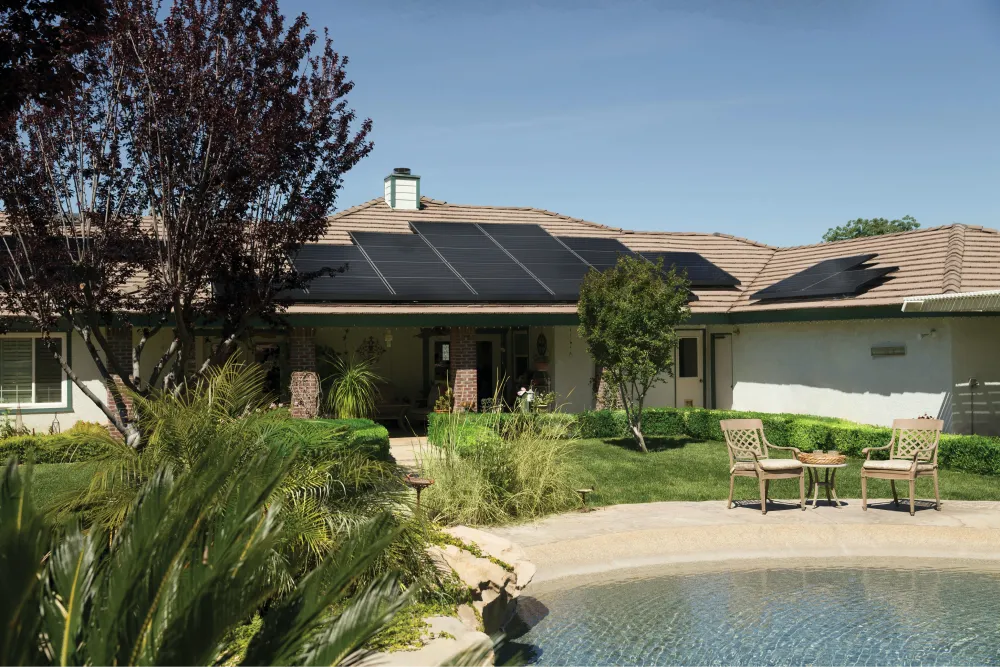
Reduce your energy bill even further by enrolling in a solar buyback plan which allows you to sell excess electricity back to the grid.
Install patio covers and awnings to shade your doors and windows from the sun, keeping your home cooler in the summer.
Install screens or films to your windows to reduce the impact of the sun’s rays and lower indoor temperatures and air conditioning use.
Spend more time outside. Activities like walking, jogging, or picnicking reduce home energy use.
Place lamps in a corner instead of against a flat wall. This way, the light reflects off two walls, allowing you to use fewer fixtures overall.
Consider downsizing your living situation to a smaller home. Reduced living space typically means lower energy consumption.
Educate your household about energy conservation. Collective efforts lead to greater savings.
Reward children for practicing energy-saving behaviors. This encourages long-term, energy-conscious habits.
Enroll in an affordable fixed-rate plan with no gimmicks. Enter your zip code below to explore BKV Energy’s low cost, no frills, and gimmick-free electricity plans. Enjoy energy without base fees, usage requirements, and high cancellation fees.
Graham Lumley, Digital Marketing Manager at BKV Energy, leads digital and traditional marketing strategies, focusing on educating Texans about the state's deregulated energy market. With over 8 years of marketing experience, he creates content to help consumers understand and save on their energy bills, bringing a fresh and dynamic approach to the industry.
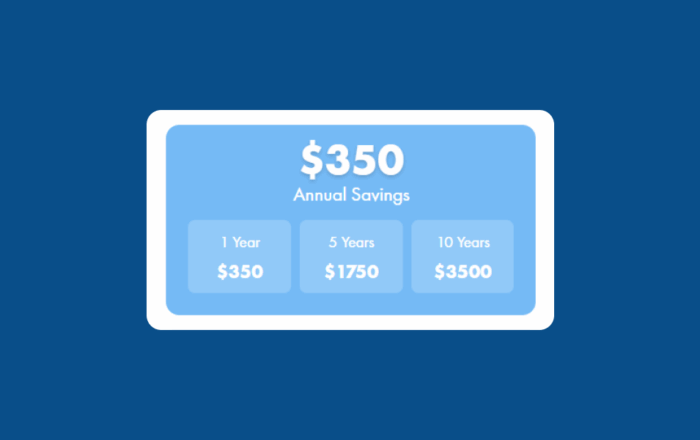
How much can you save with a more energy efficient air conditioner?
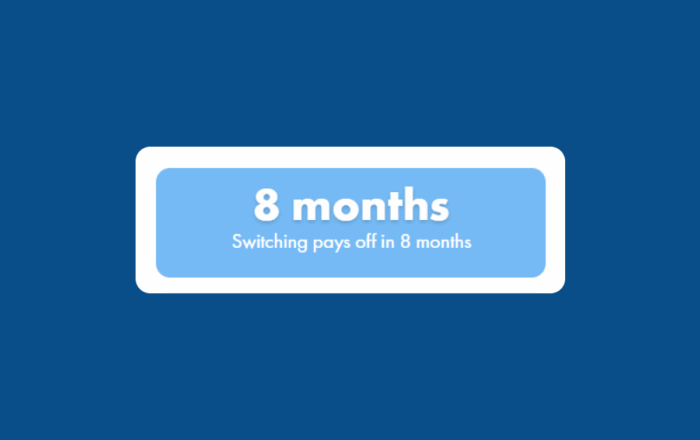
Is it worth to pay the Early Termination Fee to switch electricity plans?
Get $50 off your electric bill!
Use code BKVEJOINUS50
Enter your zip code to shop BKV Energy's affordable, fixed-rate Texas electricity plans. Use the promo code for $50 off your electric bill.